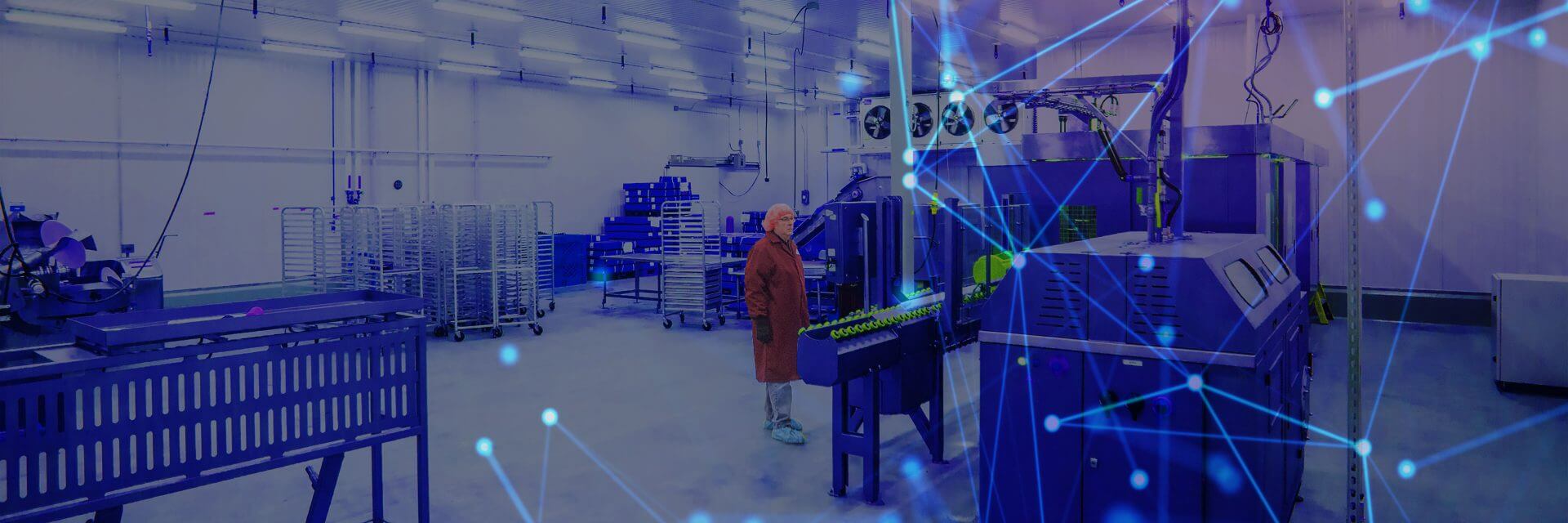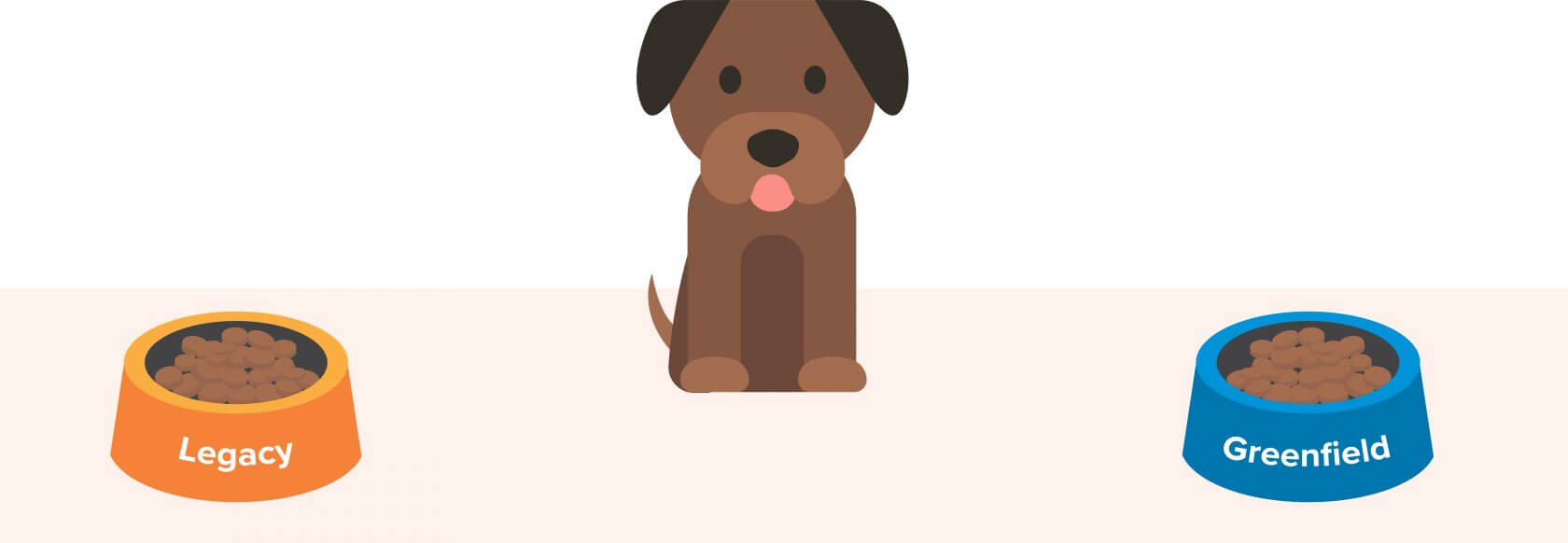
The making of a modern pet food processing plant
From plant-based treats to wet food made with all-organic ingredients, many of the same consumer trends driving innovation in the food and beverage market have proliferated into the pet food aisles. Here’s how advanced design elements help food and beverage manufacturers better adjust to a modern pet food processing plant.
When it comes to pet food processing, one thing is clear: people love their pets. From clothing and spa appointments to food and treats made of the best of the best ingredients, Americans will go to great lengths to pamper their pets.


A 2017-2018 Pet Ownership Survey produced by the American Pet Product Association found that 68% of U.S. households own a pet, and in 2019, those owners spent an estimated $75.38 billion on their pets.
Moreover, the pet food market is expected to reach $30.01 billion in 2022, according to a report published by Zion Market Research.
That’s because many of the same consumer trends in the food and beverage market have proliferated into the pet food aisles. As such, manufacturers are experiencing the same plant design challenges and opportunities with pet food processing as they do with food and beverages—when to renovate vs. start over, special consideration for raw and minimally processed food processing facilities and more.
Here’s how modern design elements help pet food manufacturers better adjust to current demands.
Modern pet food processing to satisfy consumer expectations
Many consumers expect the food they feed their pets is close to, or matches, the processed quality and safe manufacturing of the food they feed themselves. This means that for pet food production, attention to detail around employee and raw material segregation, hygiene, equipment design, conveyance, cleaning and inspection is no different than human food processing facilities. These more stringent requirements are driving up the costs for these types of manufacturing facilities. But it’s worth it if pet owners are willing to pay more for specialty food.
Production facilities are now keenly focused on raw and post-processing segregation. Cooking or kill steps are aligned with the same practices used in human food facilities, with many of the products processed post-cooking through packaging in high hygiene zones to reduce chance of cross contamination.
Additionally, with consumers demanding healthier, more varied pet foods, having the flexibility to produce different products with myriad ingredients in a wide variety of packages is increasingly important for pet food producers.
Three areas that manufactures should focus on are hygienic design, managing temperature control in the facility and designing for linear flow.
Hygienic design for pet food processing
Facility design around easily cleanable construction is a key area for improvement or upgrade, particularly in the high hygiene zones, post-kill through packaging for cooked products. Additionally, hygienic design for equipment continues to improve because difficult-to-clean equipment components slow down the production process.
When selecting equipment with hygiene in mind, we look for speed and ease of disassembly, reduction in loose parts and visibility into all areas of product contact. It’s time for replacement when an older piece of equipment cannot be easily disassembled, visually or biologically inspected and pass these cleanings/inspections on a regular basis. Consistent, repeatable cleaning practices are paramount.
Furthermore, as a growing number of consumers want more raw meat in their pet food options, it has special implications for equipment. Raw meat products must be prepared under controlled conditions to reduce biological issues. This requires extruders, cookers and chilling processes that are designed to control not only the process conditions and contact surfaces’ sterility during processing, but also the conditions, environment and any source of contamination post-processing.
Finally, some packaged material will undergo thermal or other forms of processing such as HPP to ensure post-processing sterility that is no different than human food products. It’s becoming clear that there is now little difference between the equipment and the process environment for either pet or human consumption.
Managing temperature control
Incorporating more raw meat into pet food also creates new requirements for the facility environment. Facilities handling raw meat should be designed to prevent contamination and harborage of bacteria.
A temperature-controlled area within a processing facility requires a proper plan and an understanding of the processes within the space. The temperature-controlled area must be determined and mapped prior to developing a design for the area, taking into consideration required temperature control recovery time, washdown specifics, downtime for cleaning, temperature and humidity control during process and cleaning and effluent stream changes due to room temperature.
Designing for a linear flow
Facility design and organization all starts with establishing material segregation, personnel segregation and hygienic zone definition.
Raw and cooked side segregation is now the expectation, and process and support functions are organized around this primary demarcation. Designs should include a linear flow into the facility to maintain these zones of segregation. The kill step, whatever the technology becomes, is the separation point between pre-kill and post-kill. Zones immediately post-kill receive special attention to ensure the product remains uncontaminated in the highest zone of control, prior to initial packaging. As such, the ideal flow takes into account:
- Minimal personnel and material transitions.
- Aligned building design and finishes to the functions within each hygienic zone.
- Enhanced space temperature and humidity.
- Optimized movement of materials to and from the lines to ensure clean and clear paths of flow.
- Consolidated material management to reduce the ad hoc storage that springs up around production lines when material movement is inefficient.
- Separated support functions and flows for waste handling, off-spec material, container washing, clean-out-of-place operations, etc. to minimize cross contamination.
- Coordinated and segregated personnel and material movement to the extent possible to enhance safety. For example, we evaluate shared functions between pre-kill and post-kill zones to determine if personnel can efficiently service both zones while minimizing the potential for cross contamination. In some cases, shared functions such as shift change transitions, breakrooms, parts storage and cleaning are best segregated or separated. The benefits to product quality in these cases outweigh the convenience and benefits of co-mixing of staff.
Can legacy plants still offer purpose in modern pet food processing?
These updates can seem particularly daunting in an older facility, but there are cases when an old building with dated equipment has potential for improvement. Before assuming you must build from scratch, pet food manufacturers should consult with a design and construction firm like CRB to determine if you can rebuild and repurpose an existing location.


Your legacy plant may be sufficient for your long-term needs if you can balance your production needs with meeting modern food safety requirements. Will the current production environment and throughput support your strategic plan? A carefully planned renovation or expansion may achieve your goals while requiring less up-front investment. It’s important to work with a design firm to analyze possible approaches and select the option that will meet your goals and provide the greatest return on investment.
The primary issue with older facilities is segregation and continual mixing of pre- and post-kill operations or material flows. These are extremely difficult to unwind in older facilities given the space constraints and general layouts of lines, which often loop back on themselves.
Personnel hygiene transition zones can be established in a legacy facility, but these greatly increase the burden on operations as they move from one zone to another. Productivity takes a substantial hit, as time is spent changing garments, foot gear and cleaning equipment as you move through these transitions.
In contrast, newer facilities are designed to reduce these transitions to the necessary minimum.
New and expanded facilities are inherently designed to provide the necessary hygienic environments and cleanability required for modern standards. New ventilation and HVAC features provide critical temperature control, moisture and humidity control and air segregation, while a carefully planned layout can provide the ideal linear flow.
You shouldn’t underestimate a legacy facility’s potential increased costs for production and lost time due to poor zoning. It will be important to look ahead to the future of pet food processing as you consider your needs and calculate ROI.
There’s no question that consumer demand has changed the scope of the pet food industry. With consumers treating their pets as members of the family, pet food manufacturers are producing pet food as though it were human food.
Modern design elements, like selecting equipment for hygiene, creating temperature control and incorporating linear flows into plan design, help manufacturers become modern pet food processing plants.
Let us help you navigate the complex landscape of modern pet food processing. How can we guide your facility into the future?
Let’s talk.
HORIZONS
Download the latest report – Horizons: Pet Food
Our report, built on the insights of more than 300 industry leaders, explores the challenges and opportunities presented to pet food and treat manufacturers in the face of the “humanization” of pet food.
